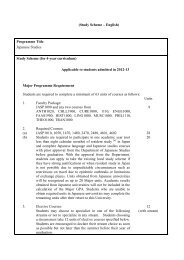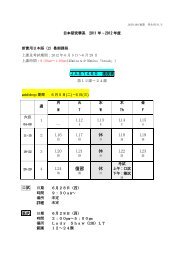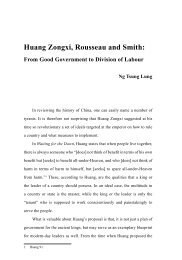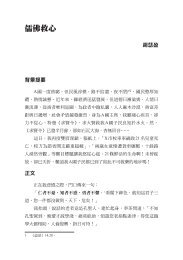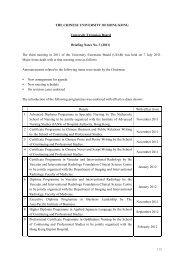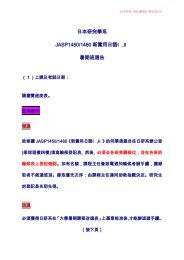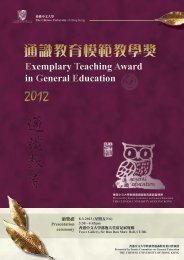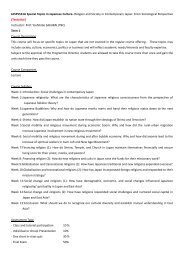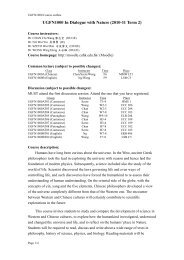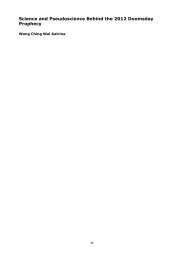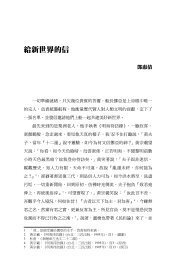ä¸è¼å ¨æ¸ - The Chinese University of Hong Kong
ä¸è¼å ¨æ¸ - The Chinese University of Hong Kong
ä¸è¼å ¨æ¸ - The Chinese University of Hong Kong
Create successful ePaper yourself
Turn your PDF publications into a flip-book with our unique Google optimized e-Paper software.
Stephen J. Friedman, Outcomes, Learning, and Assessment in General Education 15to all. Students are given a few seconds to consider their responses and thensend them to a receiver by clicking their choices on a hand-held, electronicdevice. <strong>The</strong> responses are then displayed and discussion follows. If thequestions are designed using common misconceptions as possible choices,then, based on response patterns, the teacher can instantly provide furtherexplanation. Research evidence is starting to emerge that demonstrates theefficacy <strong>of</strong> clickers, though the meta-finding for studies on the impact <strong>of</strong>technology has generally supported the null hypothesis when compared totraditional instruction (Yin, Urven, Schramm, & Friedman, 2002).A number <strong>of</strong> less technologically advanced (but still highly effective)active learning/assessment techniques have been presented by Angeloand Cross (1993). Probably the most widely used <strong>of</strong> these is the “MinutePaper.” Minute papers are <strong>of</strong>ten used at the end <strong>of</strong> a class, although theycan be introduced at any time during the instructional process. Directed touse concise, well-planned sentences, students are asked: 1) What is the mostsignificant (central, useful, meaningful, surprising, disturbing) concept thatyou learned in class today? 2) What question(s) do you have? Note cards(3”x 5”) are great for this purpose. What was learned can be written on thefront, while the question is written on the back. <strong>The</strong>y are collected as studentsleave, and instructors can peruse the contents in a few minutes. Key findingsfrom the cards must always be shared at the next class (or perhaps evensooner if the students are available in an online chat room) and <strong>of</strong>ten set thestage for the next class. Another option is to immediately circulate the cardsamong groups <strong>of</strong> students, who then tabulate, analyze, and report the resultsto the entire class. This is but one <strong>of</strong> many classroom assessment techniquesdescribed by Angelo and Cross in their book.



